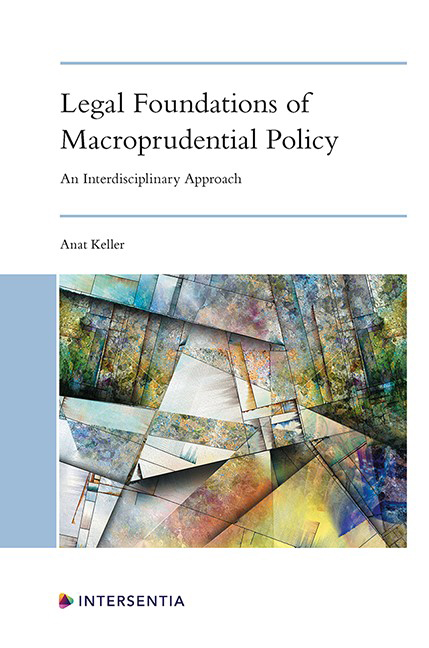Book contents
- Frontmatter
- Dedication
- Contents
- List of Cases
- List of Instruments
- Chapter 1 Introduction and Background
- Chapter 2 A Macroprudential Mandate: How to Operationalise it
- Chapter 3 Institutional and Procedural Design for Macroprudential Regimes: Institutional Models and the Nature of the Decision-Making Process
- Chapter 4 Powers of Macroprudential Authorities and the Use of Soft Law
- Chapter 5 Formulating a Taxonomy of Supervisory Approaches in Macroprudential Policymaking
- Chapter 6 Activating and Calibrating Macroprudential Instruments
- Chapter 7 Independence, Accountability and Transparency of Macroprudential Policy
- Chapter 8 A Non-Dichotomous View of Macroprudential Policy and Other Policy Areas
- Chapter 9 Data Collection and Analysis in Macroprudential Policy: An Epistemic View
- Chapter 10 Th e Global Architecture of Systemic Risk Regulation and Supervision
- Index
- About the Author
Chapter 8 - A Non-Dichotomous View of Macroprudential Policy and Other Policy Areas
Published online by Cambridge University Press: 03 October 2020
- Frontmatter
- Dedication
- Contents
- List of Cases
- List of Instruments
- Chapter 1 Introduction and Background
- Chapter 2 A Macroprudential Mandate: How to Operationalise it
- Chapter 3 Institutional and Procedural Design for Macroprudential Regimes: Institutional Models and the Nature of the Decision-Making Process
- Chapter 4 Powers of Macroprudential Authorities and the Use of Soft Law
- Chapter 5 Formulating a Taxonomy of Supervisory Approaches in Macroprudential Policymaking
- Chapter 6 Activating and Calibrating Macroprudential Instruments
- Chapter 7 Independence, Accountability and Transparency of Macroprudential Policy
- Chapter 8 A Non-Dichotomous View of Macroprudential Policy and Other Policy Areas
- Chapter 9 Data Collection and Analysis in Macroprudential Policy: An Epistemic View
- Chapter 10 Th e Global Architecture of Systemic Risk Regulation and Supervision
- Index
- About the Author
Summary
” No one would dream of designing the human anatomy by disconnecting the controls of the left and right sides of the body “
William Naurdhaus, Yale University, 1994The need for a clear framework for policy coordination has strong roots in theories of economic policy. It is even more salient in macroprudential policymaking given that, as shall be seen in the following chapter, the regulation of uncertainty cannot be “ solved “ by isolated knowledge.
This chapter analyses the potential tension between policy boundaries and coordination. Boundaries that define macroprudential policy as a distinct and specialised policy area are essential to ensure a high insularity of macro prudential authorities from political and industry pressures. Boundaries are also key to forming a defined accountability framework of macroprudential authorities. After all, accountability means the capacity to identify who did what and this may be slightly lost during a coordination process.Yet, systemic problems, in their nature, necessitate a holistic solutionand coordination with other policy areas.This is, of course, not a new contention. It has beenlong acknowledged in the scholarly discourse in public policy that “ Issues are becoming increasingly ‘ cross-cutting ‘ , and do not fit the ministerial boxes into which governments, and policy analysts, tend to place policies. “Boundaries can inhibit this coherence and form barriers to creative and multi-disciplinary thinking (Chapter 9).
The chapter is structured as follows. Section 1 lays out the theoretical foundations for policy coordination as developed by Tinbergen, Theil and others. It provides an insight into the progressing evolution from the classical theory of economic policy to a new theory that operates in a more complicated environment of interactions and strategic games. The section also draws on concepts developed in inter-organisational politics, particularly in relation to public policy organisations. Section 2 explores the interlinkages between macroprudential policy and other traditional policy areas and the possible frictions between their respective objectives, transmission mechanisms and instruments. Understanding these interlinkages is essential in order to choose the appropriate coordination mechanisms of macroprudential policy with other policy areas. It, accordingly, asserts that macroprudential policymaking cannot be conducted in silos.
- Type
- Chapter
- Information
- Legal Foundations of Macroprudential PolicyAn Interdisciplinary Approach, pp. 217 - 256Publisher: IntersentiaPrint publication year: 2020



